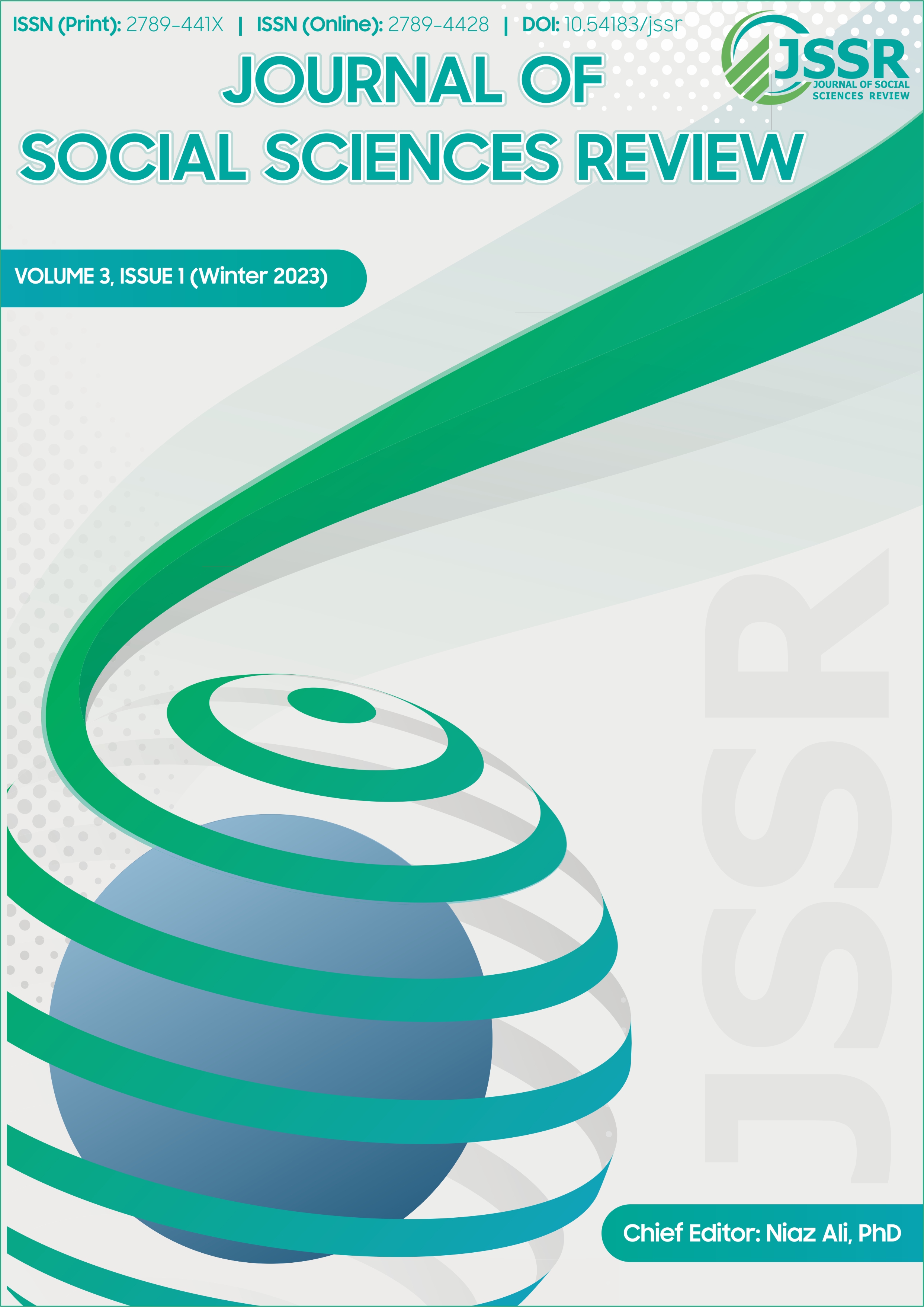A Study of Teachers' Approaches to Teaching at the University Level
DOI:
https://doi.org/10.54183/jssr.v3i1.114Keywords:
Approaches, Professional Development, Higher Education, Teacher-focused approaches, Learner-focused approachesAbstract
University teachers' methods are essential for students learning. At this point, teachers can teach students how to think critically, which helps them solve problems that are important for a country's social and economic progress. Teachers help students get ready for their future jobs. They also show what to do. So, students must know how their teachers' methods help them. Teachers use complicated teaching tactics and intentions when teaching. The Approaches to Teaching Inventory is a reliable and valid survey tool used in this quantitative study to look at university professors in Punjab, Pakistan. One hundred twenty university teachers were chosen by cluster stratified random sampling. Based on this study, teachers use techniques like Conceptual Change-Student-Focused and Information Transmission-Teacher-Focused. Both public and private universities teach the same way. This study suggests that university teachers should get more training in teaching methods.
References
Altbach, P. G., Reisberg, L., & Rumbley, L. E. (2010). Trends in global higher education. https://doi.org/10.1163/9789004406155
ÅKerlind, G. S. (2005). Academic growth and development - How do university academics experience it? Higher Education, 50(1), 1-32. https://doi.org/10.1007/s10734-004-6345-1
Hicks, M., Smigiel, H., Wilson, G., & Luzeckyj, A. (2010). Preparing academics to teach in higher education. Final report. Australian Learning and Teaching Council.
Jacobs, D., Steyaert, J., Dierickx, K., & Hens, K. (2020). Parents’ multi-layered expectations when requesting an Autism Spectrum Disorder assessment of their young child. ResearchGate, 20(1). https://doi.org/10.1186/s12888-020-02806-7
Kalman, R., Macias Esparza, M., & Weston, C. (2020). Student views of the online learning process during the COVID-19 pandemic: A comparison of upper-level and entry-level undergraduate perspectives. Journal of Chemical Education, 97(9), 3353-3357. https://doi.org/10.1021/acs.jchemed.0c00712
Kember, D., & Kwan, K. (2002). Lecturers’ approaches to teaching and their relationship to conceptions of good teaching, in N. Hativa & P. Goodyear (Eds) Teacher thinking beliefs and knowledge in higher education (Dordrecht, Kluwer), 219– 24.
Meyer, J. H., & Land, R. (2005). Threshold concepts and troublesome knowledge (2): Epistemological considerations and a conceptual framework for teaching and learning. Higher Education, 49(3), 373-388. https://doi.org/10.1007/s10734-004-6779-5
Prosser, M., & Trigwell, K. (1997). Relations between perceptions of the teaching environment and approaches to teaching. British Journal of Educational Psychology, 67(1), 25-35. https://doi.org/10.1111/j.2044-8279.1997.tb01224.x
Rippin, A., Booth, C., Bowie, S., & Jordan, J. (2002). A complex case: Using the case study method to explore uncertainty and ambiguity in undergraduate business education. Teaching in Higher Education, 7(4), 429-441. https://doi.org/10.1080/135625102760553928
Stes, A., & Van Petegem, P. (2012). Profiling approaches teaching in higher education: A cluster-analytic study. Studies in Higher Education, 39(4), 644-658. https://doi.org/10.1080/03075079.2012.729032
Snyder, L., & Snyder, M. (2008). Teaching critical thinking and problem-solving skills. Delta Pi Epsilon Journal, 50(2), 90-99.
Trigwell, K., Prosser, M., Martin, E., & Ramsden, P. (2005). University teachers’ experiences of change in their understanding of the subject matter they have taught. Teaching in Higher Education, 10(2), 251-264. https://doi.org/10.1080/1356251042000337981
Trigwell, K., & Prosser, M. (2004). Development and use of the approaches to teaching inventory. Educational Psychology Review, 16(4), 409-424. https://doi.org/10.1007/s10648-004-0007-9
Trigwell, K., & Prosser, M. (1996). I am changing approaches to teaching: a relational perspective. Studies in Higher Education, 21, 275–284. https://doi.org/10.1080/03075079612331381211
Uiboleht, K., Karm, M., & Postareff, L. (2018). The interplay between teachers’ approaches to teaching, students’ approaches to learning and learning outcomes: A qualitative multi-case study. Learning Environments Research, 21(3), 321-347. https://doi.org/10.1007/s10984-018-9257-1
Lindblom‐Ylänne, S., Trigwell, K., Nevgi, A., & Ashwin, P. (2006). How approaches to teaching are affected by discipline and teaching context. Studies in Higher Education, 31(3), 285-298. https://doi.org/10.1080/03075070600680539
Downloads
Published
Issue
Section
License
Copyright (c) 2023 Copyright in the Journal of Social Sciences Review is retained by the author(s). Authors also grant any third party the right to use the article freely as long as its integrity is maintained and its original authors, citation details and publisher are identified.

This work is licensed under a Creative Commons Attribution-NonCommercial 4.0 International License.
SSR's Editorial Board shares the vision of providing free access to information, education, and science for everyone, thus promoting its content through an OPEN ACCESS POLICY, fulfilling the DOAJ definition of open access. The JSSR adheres to an Open Access and Copyright Licensing Policy based on the belief that making research freely accessible to the public promotes greater global knowledge sharing.
The JSSR uses the Creative Commons Attribution-NonCommercial 4.0 International License. The authors who apply and publish in JSSR consent to abide by the copyright policy set out in the Creative Commons 4.0 license (Attribution-NonCommercial 4.0 International license).
- Copyright in the Journal of Social Sciences Review is retained by the author(s).
- Authors also grant any third party the right to use the article freely as long as its integrity is maintained and its original authors, citation details and publisher are identified.
While "By 'open access' to this literature, we mean its free availability on the public internet, permitting any users to read, download, copy, distribute, print, search, or link to the full texts of these articles, crawl them for indexing, pass them as data to software, or use them for any other lawful purpose, without financial, legal, or technical barriers other than those inseparable from gaining access to the internet itself."



